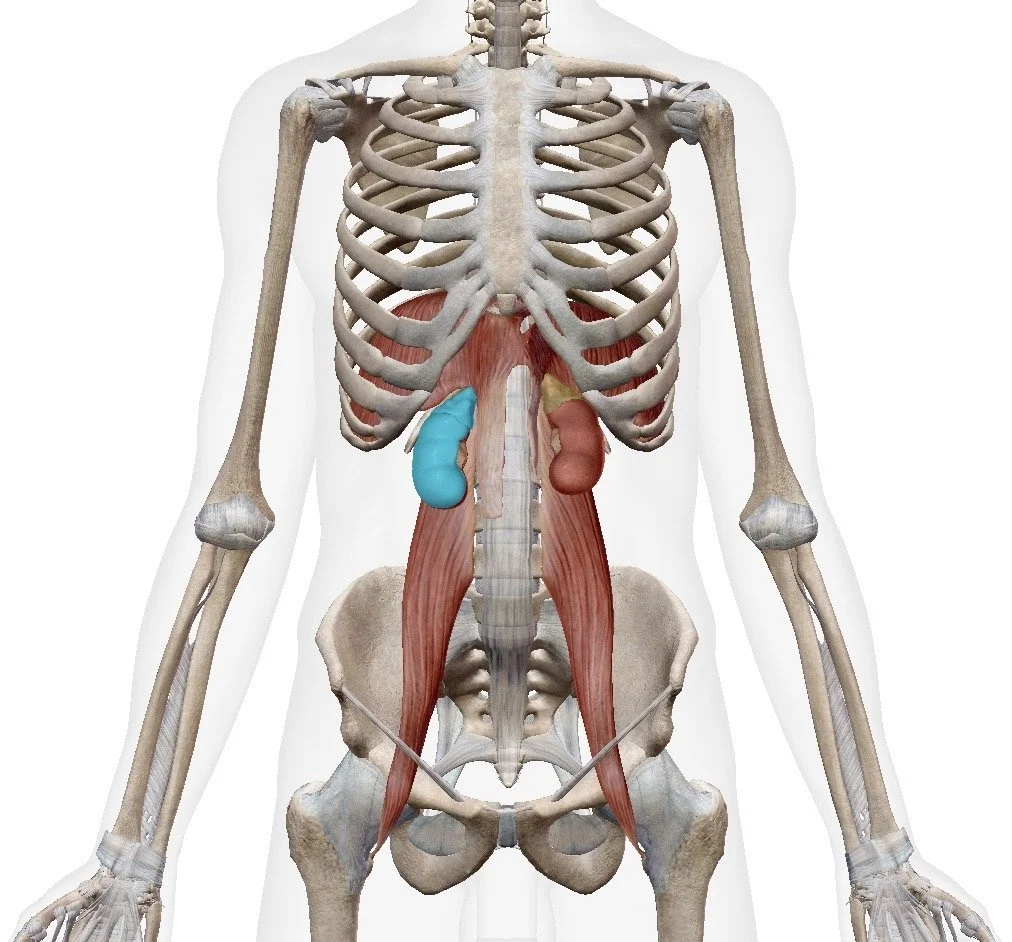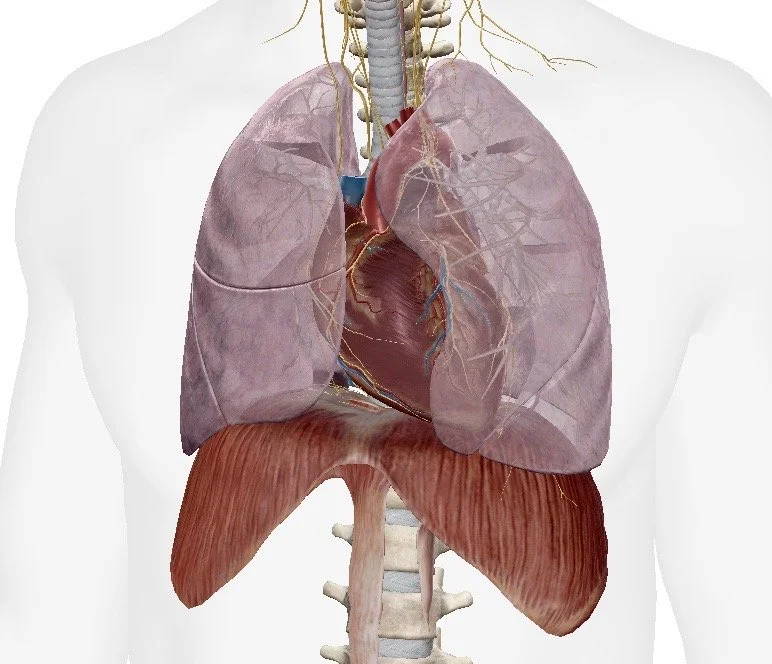
Anatomy
The Diaphragm
About
The diaphragm is your primary breathing muscle. Its movement is responsible for inflating the lungs. There’s a common misconception that the lungs are muscular; the lungs are passive sacs that respond to changes in air pressure. As the diaphragm moves downward towards the belly (thank you phrenic nerve!), air is pulled into and expands the lung sacs; this is the inhale. Then as the diaphragm moves back up into the rib cage, the air in the lungs is pressed out of the body; this is the exhale.
Location
The diaphragm connects to the lower ribs (7-12), the xiphoid process (lower tip of your sternum). It also connects to the front of some lumbar.
Important Connections
The psoas muscles “interdigitate” with the diaphragm. That means that the muscle fibers where the they come together are indistinguishable, so they tug on one another. As you exhale, the upper part of the psoas lengthens; as you inhale, it shortens.
The Heart muscle sits on top of the diaphragm. As you breathe, the heart, nestled between the lungs, gets a massage.
ProblemFor a variety of reasons like stress, trauma, the natural movement of the diaphragm can be altered and/or restricted. Disregulated breathing can lead to anxiety, inflammation, and other health challenges.
Working with the Diaphragm
We can help restore healthy movement of the diaphragm using various yoga postures and breathing techniques. Twists are especially helpful to “wring out” tension as is practicing long complete exhales without exerting any force. See “The Three Fundamentals” for more on this.




